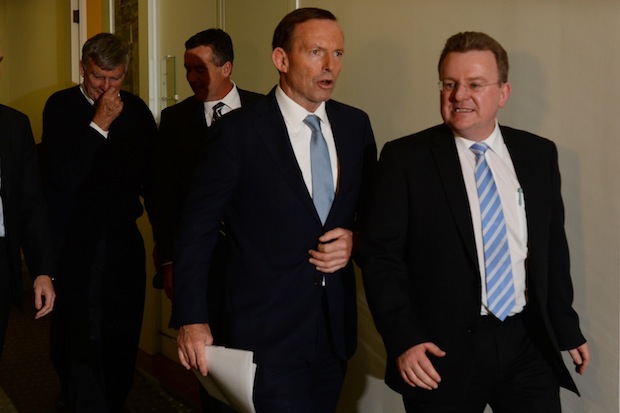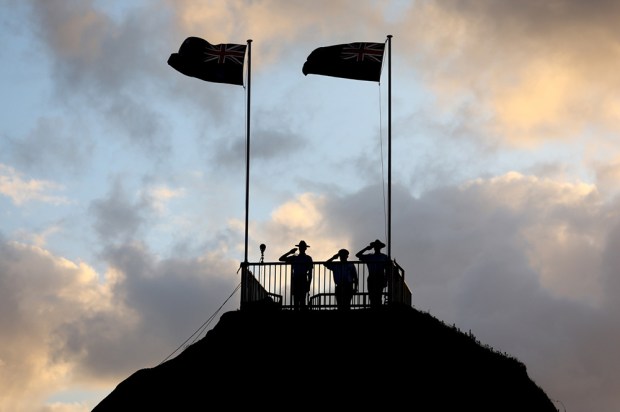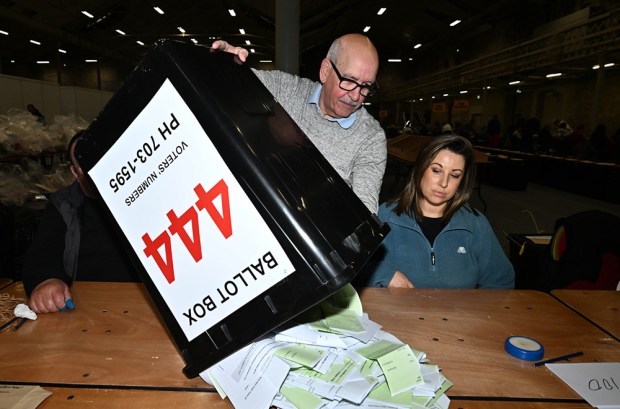The trouble with the Liberal party is that it doesn’t realise how deeply it is in trouble. Liberals have missed the point that winning by default over chaotic or corrupt (or both) Labor state and federal governments from Opposition is different from winning deservedly from government, which John Howard managed to do three times. Whether the present plethora of Liberal-led governments, state and federal, will survive depends not only on the politicians sitting to the right of the Speaker, but also on the Liberal party organisations that select them — and the manner in which they do so.
So these organisations can no longer afford to have factional warlords playing the dominant role in anointing those seeking political office — and doing so in such a way that, according to Howard himself, reform is needed in order ‘to deliver a more representative bunch of future candidates’. Reform, particularly by way of greater transparency and, in NSW, by following the other state divisions (and Labor’s recent moves) in restoring power to grass roots members by way of plebiscites, is now an urgent need.
The public decline of the Liberal brand has been obscured by Labor’s collapse on 7 September to its lowest first preference vote for a century. But even in success, Tony Abbott’s team was the first choice of a diminishing minority of Australians: in winning only 45.6 per cent of first preferences, it required a further 4.4 per cent in other candidates’ preferences to win a majority of House of Representative votes. But in Howard’s 1996 victory, he needed only 2.7 per cent and in the previous Liberal-led change of government in 1975, Malcolm Fraser got the direct support of an absolute majority of 53 per cent of voters. That decline becomes a disaster in the Senate, where John Howard’s 44 per cent of first preferences slumped to 37.7 per cent in 2013 as almost two thirds of voters preferred a curious collection of alternatives.
While the NSW Liberal party is responding to this challenge by trying to appear reformist, it is nevertheless continuing to enforce authoritarian executive powers over its diminishing membership such as restrictions on members’ rights to free speech that are based on the well-intentioned but now inappropriate ground that preventing the washing of dirty political linen in public is appropriate damage-control. This may have had some merit in the past but is counter-productive in today’s ‘transparency-demanding’ world.
But will the ‘reform’ process be side-tracked into doing no more than fixing up the chaotic constitution that has become so cumbersome through ad hoc amendments that State Executive often has to use special resolutions suspending the constitution to ensure it is acting validly?
At last November’s NSW State Council meeting, Abbott, state Premier Barry O’Farrell and then state President Arthur Sinodinos all spoke of the need for reform, but not the particular (and ultimately defeated) pro-plebiscites but flawed resolution before it that had emerged from an unwelcome legal stoush within the party. Instead, State Executive was authorised to prepare, after the 2013 election, reform proposals for the State Council to consider.
But this broad resolution, on the insistence of the most powerful (and self-confessed) factional warlord, deliberately excluded the key faction-busting proposal to consider direct plebiscites of all financial members to replace the present very limited delegate system in pre-selections of candidates for parliamentary seats.
While there is now no specific requirement that plebiscites will be included in the reform process by a state executive whose factional membership has most to lose by it, the grass roots can only rely on personal assurances that it will be ‘considered’.
There is also a sideshow in whether Abbott’s welcome ban on hired lobbyists occupying senior party positions (echoed by O’Farrell in NSW) has gone far enough, with the NSW Liberal state president being the CEO (and effective in-house lobbyist) of a gambling industry organisation. Several of his state executive colleagues have similar ‘in-house’ roles. The potential conflict of interest issue rests on the dual role of being influential in the selection (or re-endorsing) of the very MPs from whom they may subsequently be seeking favours as lobbyists.
Although the reform process is under way, the state executive has ensured that the existing factionally manipulated pre-selection system (replaced with plebiscites in most other states) is now certain to be used for the NSW state election that is not due until March 2015. This has been done by opening and closing nominations this month for 28 of the Legislative Assembly’s 93 seats and closing in February for another 25 (along with some upper house seats). Even if the reforms eventually include plebiscites, they will not have an impact on NSW state pre-selections until the 2019 poll.
This slow and uncertain process, where the substance of motions for reform is the preserve of those at the top and where there is constraint on open informed discourse among the membership at large, does not inspire confidence in the likely outcome. Proposals will filter down to State Council (where ordinary branch members get no direct say, being represented by their elected delegates, and where constitutional resolutions cannot be amended from the floor). Like it or lump it. These will not emerge from free, informed and open debate among the grass roots membership because, as the state director has recently informed members, it is a breach of the rules not only to contact other members without HQ approval but also to discuss internal party matters in public. So there is a severe constraint on the canvassing of reform issues.
As its membership and voting support diminishes, the Liberal party must recognise that the way to get the best reform outcome is open discussion that really engages grass roots party members. This would also enable the millions of Liberal voters who are not party members to be better informed about the party they vote for.
But the omens are not good. John Ruddick, the leading pro-reform agitator who attracted almost 40 per cent of the vote in the latest election for state president, has already been charged with breaking the party’s rules by his public advocacy, is in trouble for emailing his case for reform to members and faces being suspended for up to five years. Is this really the path to reform?
Got something to add? Join the discussion and comment below.
Get 10 issues for just $10
Subscribe to The Spectator Australia today for the next 10 magazine issues, plus full online access, for just $10.
Michael Baume is a former Liberal senator and federal MP.
You might disagree with half of it, but you’ll enjoy reading all of it. Try your first month for free, then just $2 a week for the remainder of your first year.














Comments
Don't miss out
Join the conversation with other Spectator Australia readers. Subscribe to leave a comment.
SUBSCRIBEAlready a subscriber? Log in